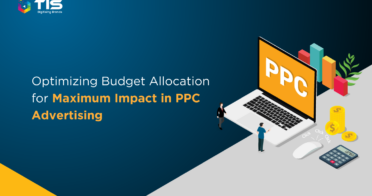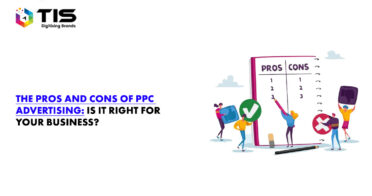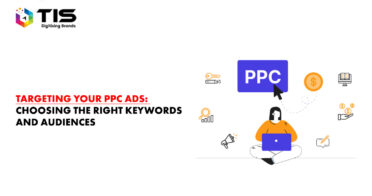





 May 17, 2023
May 17, 2023

Pay-per-click (PPC) advertising is a powerful digital marketing strategy that requires a thorough understanding and analysis of key metrics to evaluate the effectiveness of your campaigns. This article focuses on three crucial metrics in PPC advertising: click-through rates (CTR), conversion rates, and cost-per-click (CPC). By gaining a comprehensive understanding of these metrics and employing effective keyword optimization strategies, you can significantly improve the performance of your PPC campaigns and achieve a higher return on investment (ROI).
Click-Through Rate (CTR) is a fundamental metric in pay-per-click (PPC) advertising that measures the percentage of users who click on an ad compared to the number of times it is displayed. It provides valuable insights into the effectiveness of various elements such as ad copy, ad placement, and targeting strategies. A higher CTR generally indicates that the ad is engaging and relevant to the target audience.
The quality and relevance of the ad copy play a significant role in influencing the CTR. Crafting compelling and persuasive ad copy that resonates with the target audience increases the likelihood of attracting clicks. It is important to highlight the unique selling points, benefits, and call-to-action within the limited space of the ad.
The position and visibility of the ad on the search engine results page or website can have a substantial impact on the CTR. Higher ad placements, such as the top positions or prominent areas of a webpage, generally receive more clicks. Users tend to focus on the top and more visible ad placements, making it crucial to secure prime positions for better CTR.
Ensuring that the ad aligns with the user’s search intent and matches the keywords targeted is vital for generating clicks. When the ad is relevant to what the user is searching for, it increases the chances of capturing their attention and enticing them to click. Conducting thorough keyword research and implementing precise targeting strategies can enhance ad relevance and ultimately boost the CTR.
By optimizing these factors, advertisers can improve their CTR, which indicates that their ads are resonating with the target audience and effectively capturing their interest. Monitoring and analyzing the CTR over time can help identify trends, make data-driven decisions, and refine PPC campaigns to achieve better performance and results.
Conversion Rate (CR) is a critical metric in PPC advertising that measures the percentage of users who complete a desired action after clicking on an ad. This desired action can vary based on the campaign’s goals, such as making a purchase, filling out a form, signing up for a newsletter, or any other specific action that aligns with the advertiser’s objectives. CR provides valuable insights into the effectiveness of an ad in driving user behavior and achieving the desired campaign outcomes.
The design, usability, and relevance of the landing page where users are directed after clicking on the ad play a crucial role in influencing conversions. A well-optimized landing page should provide a seamless transition from the ad and offer a user-friendly experience. It should be visually appealing, easy to navigate, and have clear and concise content. A strong call-to-action (CTA) that guides users towards the desired action can significantly boost conversion rates. Additionally, elements such as loading speed, mobile responsiveness, and trust signals (e.g., security badges, customer testimonials) contribute to a positive landing page experience, fostering higher conversion rates.
Ensuring that the content of the ad aligns with the landing page and the user’s expectations is vital for improving conversion rates. When users click on an ad, they expect the landing page to provide relevant information or offer related to what was promised in the ad. By maintaining consistency between the ad and the landing page content, advertisers can reduce friction and increase the likelihood of conversions. Irrelevant or misleading ad content that doesn’t fulfill the user’s expectations can lead to a higher bounce rate and lower conversion rates.
A value proposition refers to the unique benefit or advantage that a product, service, or offer provides to the target audience. Communicating a clear and compelling value proposition in both the ad and the landing page is essential for persuading users to take the desired action. The ad should highlight the value proposition effectively and entice users to click. Once on the landing page, the value proposition should be reinforced and elaborated upon, emphasizing why the user should choose the product or service and what sets it apart from competitors. A strong and persuasive value proposition can significantly influence user decisions and positively impact conversion rates.
By paying close attention to these factors, advertisers can optimize their PPC campaigns to improve conversion rates. Regularly monitoring and testing different elements of the landing page, ad content, and value proposition can help identify areas for improvement and refine the campaign strategy, ultimately driving higher conversion rates and achieving campaign objectives more effectively.
Cost-Per-Click (CPC) is a crucial metric in PPC advertising that determines the cost an advertiser incurs for each click on their ad. It plays a significant role in evaluating the financial efficiency of a PPC campaign and helps in budgeting and assessing the return on investment (ROI) of advertising efforts.
Bid Strategy: Advertisers have the flexibility to set bids for keywords and ad placements, which directly impact the CPC. Higher bids increase the chances of winning ad auctions and securing a prominent ad position. However, it is important to note that higher bids also lead to a higher CPC. Advertisers must strike a balance between bid amounts and the desired level of exposure.
Quality Score: Search engines and advertising platforms evaluate the quality and relevance of ads and landing pages through a quality score mechanism. The quality score considers factors such as ad relevance, expected click-through rate (CTR), landing page experience, and historical performance. A higher quality score indicates a better user experience and relevance, which can result in a lower CPC. Advertisers should focus on optimizing their ads and landing pages to improve their quality scores and potentially reduce their CPC.
Competition: The level of competition in the industry or during specific periods significantly impacts CPC. In highly competitive sectors, where multiple advertisers are vying for the same keywords and ad placements, the bidding competition intensifies. This increased competition often drives up the CPC. During peak seasons or events when demand is high, the CPC can also increase due to heightened competition among advertisers. Advertisers should consider the competitive landscape and adjust their bidding strategies accordingly.
In conclusion, understanding and analyzing key metrics such as click-through rates (CTR), conversion rates, and cost-per-click (CPC) is essential for optimizing and measuring the success of ppc management services
By focusing on improving CTR, advertisers can ensure that their ads are engaging and relevant to the target audience. Factors such as ad copy, ad placement, and ad relevance play a crucial role in influencing CTR. Monitoring and analyzing CTR trends over time can provide valuable insights for refining ad strategies and achieving better performance.
Conversion rates are a vital metric that indicates the effectiveness of ads in driving desired user actions. Optimizing factors such as landing page experience, ad relevance, and value proposition can significantly improve conversion rates. Regular testing and refinement of these elements can lead to higher conversion rates and successful campaign outcomes.
CPC is an important metric for assessing the financial efficiency of PPC campaigns. Advertisers can influence CPC through bid strategies, balancing bid amounts with the desired exposure. Quality score, which considers factors like ad relevance and landing page experience, also plays a role in determining CPC. Additionally, competition in the industry or during peak periods can impact CPC, as higher bidding competition can drive up costs.
By understanding and optimizing these PPC metrics, advertisers can make informed decisions, allocate budgets effectively, and achieve a higher return on investment (ROI) from their PPC advertising efforts. Continuous monitoring, analysis, and refinement are key to maximizing the success of PPC campaigns.

In the dynamic realm of pay-per-click (PPC) advertising, the key to success doesn’t solely lie in the magnitude of your expenditures; it rests on the shrewd distribution of those funds to yield optimal outcomes. With the application of adept strategies, your budget can be stretched to its utmost potential,...
Read More

Overview of PPC Advertising PPC (Pay-Per-Click) advertising is an online advertising model where advertisers pay a fee each time their ad is clicked. It involves bidding on keywords and displaying ads in search engine results or on relevant websites. When a user clicks on the ad, the advertiser is...
Read More

Introduction: PPC (Pay-Per-Click) advertising has become one of the most popular digital marketing methods for businesses to attract potential customers and increase website traffic. However, simply creating a ppc marketing services is not enough to ensure its success. The key to a successful PPC campaign is to effectively target...
Read More